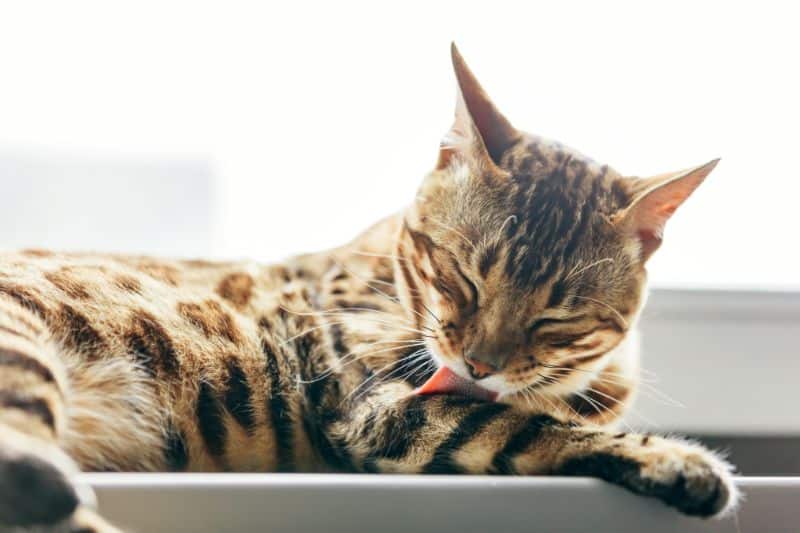Cat Hairballs: Normal, Until They’re Not

With their almost in-your-face tidiness, cats make excellent housemates. But perhaps one caveat to this meticulous self-grooming is that all that fluff and fur has to go someplace. Usually cats can digest any hair picked up by their sandpaper-like tongues, but cat hairballs (yuk!) are bound to happen from time to time.
Without a doubt, hairballs come with the territory of cat ownership, but there is a point when they can signal that something’s not right.
It Makes Sense
Cats spend up to half of their waking lives grooming themselves. It might appear that they have a compulsive drive to stay clean, and for good reason. In the wild, cats must reduce how “visible” they are to predators. If they smell like food, or their own prey, it can attract trouble.
In addition to cultivating and maintaining a dazzlingly glossy sheen on their coat, the behavior makes them feel good. The spiky, hook-like protrusions on the tongue is designed to pick up any loose, dead hair and debris.
All in the Timing
During high-shedding seasons, cats will swallow more hair than usual. Most of the time, hair can be passed through the GI tract and deposited in their litter boxes. However, because cat hair contains a difficult to digest protein called keratin, cat hairballs are a natural consequence of swallowed, unprocessed fur.
Normal, Yet Gross
Few cat owners would say that cat hairballs aren’t repugnant, but we generally just accept them as part of the privilege of cat ownership.
Technically known as “trichobezoars”, cat hairballs are too large to pass from the stomach to the intestines. Instead, trichobezoars are pushed back up the esophagus. As a result, they aren’t “ball-like” at all, but rather cylindrical in shape. Besides fur, trichobezoars can also contain bile and even food.
When Cat Hairballs Are Problematic
Vomiting is never a symptom to ignore. Indicative of so many potential health problems, cat owners should pay extra attention to increased vomiting episodes with varying degrees of intensity or frequency. Please contact us if you see your cat throw up more than 2 hairballs in a single month.
Poor Kitty
We recommend also being on the lookout for vomiting with blood, unproductive vomiting, diarrhea, weight loss, inappetance, lethargy, and changes in behavior. Please do not delay seeking immediate veterinary help.
Some cat hairballs get so big that they become stuck inside the GI tract. This type of obstruction is very dangerous and must be seen promptly. Surgical removal may be a life-saving necessity.
Coughing is often misunderstood as an accessory to producing a hairball. Many cats may assume a similar position, but coughing and hacking up a hairball are two very different things. Respiratory distress should also be taken seriously.
Preventing Cat Hairballs
You can take extra opportunities to brush and comb out your cat’s coat to reduce how much loose or dead hair they have built up. If needed, certain prescription diets or nutritional supplements may help mitigate some of the retching.
As always, if you have additional questions about cat health or feline behavior, our veterinarians are always here for you at BEEVET Animal Hospital.
